Hanging baskets filled with beautiful herbs is a great way to brighten up any garden and add color and fragrance. With such a wide variety of herbs available, there is something for everyone when filling your hanging basket. Picking the right herbs for your hanging baskets is a matter of trial and error.
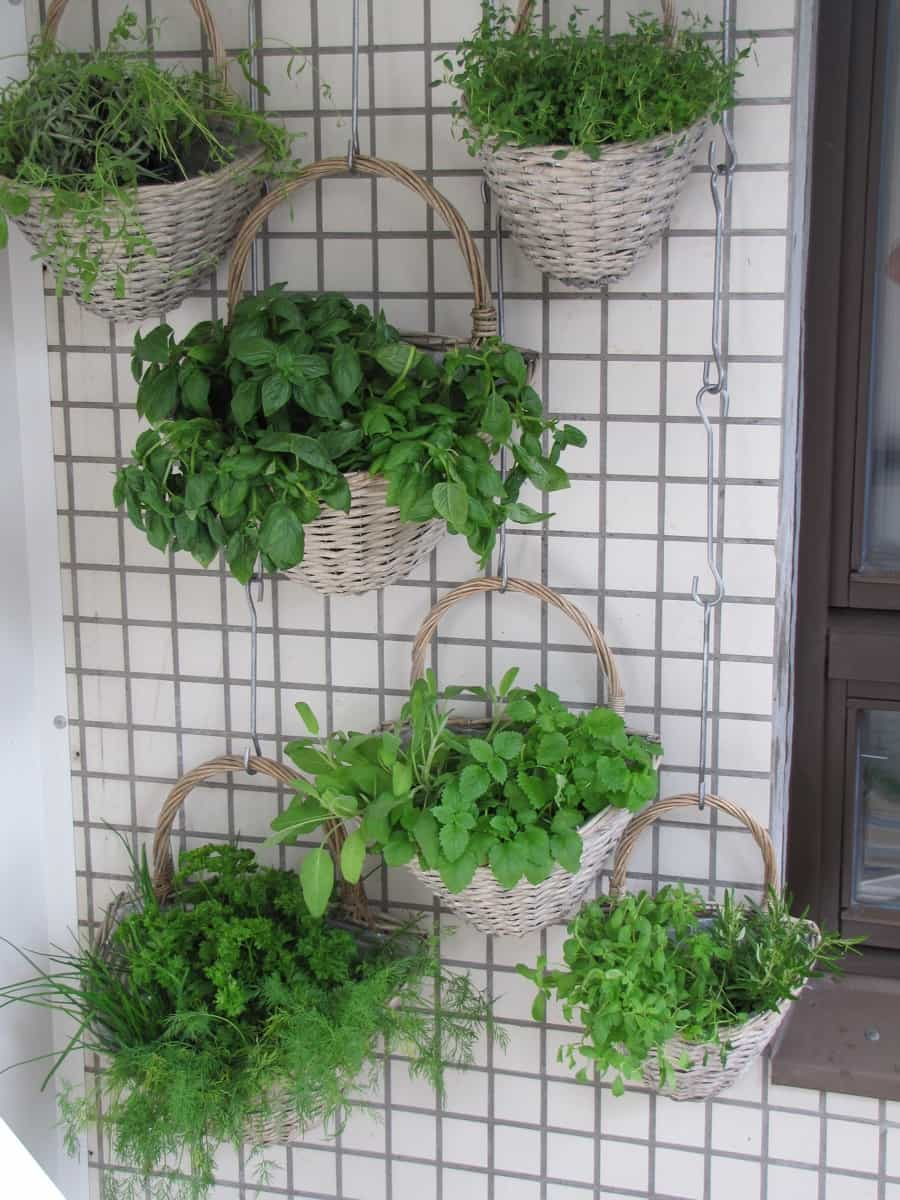
Some will do better than others in certain conditions, so it’s important to experiment to find what works best in your particular climate and situation. With a little patience, you can have a beautiful, fragrant, and edible hanging basket that will add flavor to your dishes and beauty to your home. With a careful selection of soil, sunshine, and water, your herbs should thrive and provide fresh flavor all season long. Let’s check out 11 Herbs for hanging baskets below.
Benefits of growing herbs in hanging baskets
Regarding herbs, hanging baskets are the best way to add beauty to your home without taking up too much space. Not only do they look decent, but they also offer several benefits. For one, herbs grown in hanging baskets are more exposed to sunlight than those grown in other types of containers.
This means that they will generally produce more essential oils, which give herbs their flavor and aroma. In addition, hanging baskets allow for better air circulation around the plants. This can help prevent fungal diseases and mildew from developing. Finally, herbs grown in hanging baskets tend to be less susceptible to pests and animals than those grown in the ground.
11 Herbs for hanging baskets
Mint
Mint is a versatile herb used in various dishes, from salads to desserts. Mint can also be used to make a refreshing tea. While many herbs can thrive in a hanging basket, Mint is a good choice. This hardy herb can handle a fair amount of neglect and still produce abundant fresh leaves. To grow Mint in a hanging basket, start with a healthy plant from your local nursery or garden center. Choose a pot at least 12 inches in diameter with drainage holes.
In case you missed it: Mint And Sage Companion Plants, Growing Tips
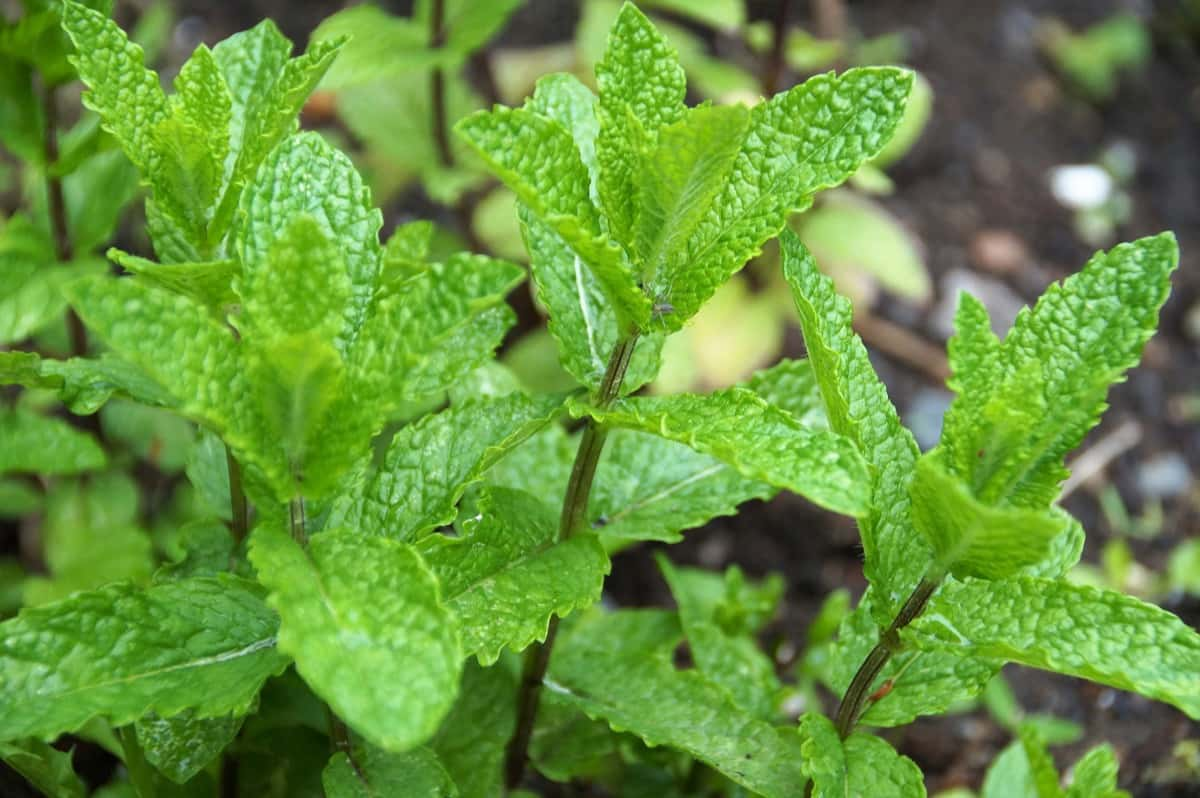
You can fill the pot with a well-draining potting mix and place the pot in an area that gets full sun and partial shade. Water regularly, allowing the soil to dry out slightly between watering. During the growing season, apply a balanced liquid fertilizer every two weeks. Pinch back the tips of the plant to encourage bushiness. Mint is one of the best herbs for hanging baskets because it is a hardy plant that can tolerate partial shade. Mint also has a cascading growth habit, which makes it ideal for hanging baskets.
Creeping Thyme
Creeping Thyme is a versatile and easy-to-grow herb that adds to any hanging basket. This drought-tolerant herb can be used in cooking or as a ground cover, and it’s also attractive to bees and other pollinators. Thyme is a great herb for hanging baskets because it tends to creep and spread. This makes it ideal for covering a larger area in your basket and providing more plant coverage. Thyme is also a drought-tolerant plant so it can withstand periods of dryness better than other herbs.
Winter Savory
Although Winter Savory is a perennial, in many regions, it is grown as an annual. It is a low-growing plant, only about 6 inches in height, with small, dark green leaves. As the weather cools, many gardeners put their hanging baskets away for the winter. But there are still a few hardy herbs that can thrive in cooler temperatures, like Winter Savory.
This perennial herb is known for its strong flavor, similar to a cross between Thyme and Mint. It’s a great addition to any dish and can also be used as a dried herb. Winter Savory is relatively easy to care for and doesn’t require much attention. Keep it watered, and it will do well in almost any type of soil. Winter Savory is a great option for your hanging basket if you’re looking for an herb that can withstand the cold weather.
Parsley
Parsley is one of the best herbs for hanging baskets. It has a delicate, fern-like appearance. Parsley is a biennial herb that will live for two years before dying off. However, it is best to replant Parsley every year to ensure a fresh crop. Parsley is very easy to grow and quite tolerant of heat and cold. It prefers full sun but will also do well in partial shade. When growing Parsley in a hanging basket, provide plenty of drainages. Parsley is a heavy feeder that needs regular fertilization to produce its best flavor.
In case you missed it: How to Grow Parsley from Seed: A Detailed Guide to Planting to Harvest
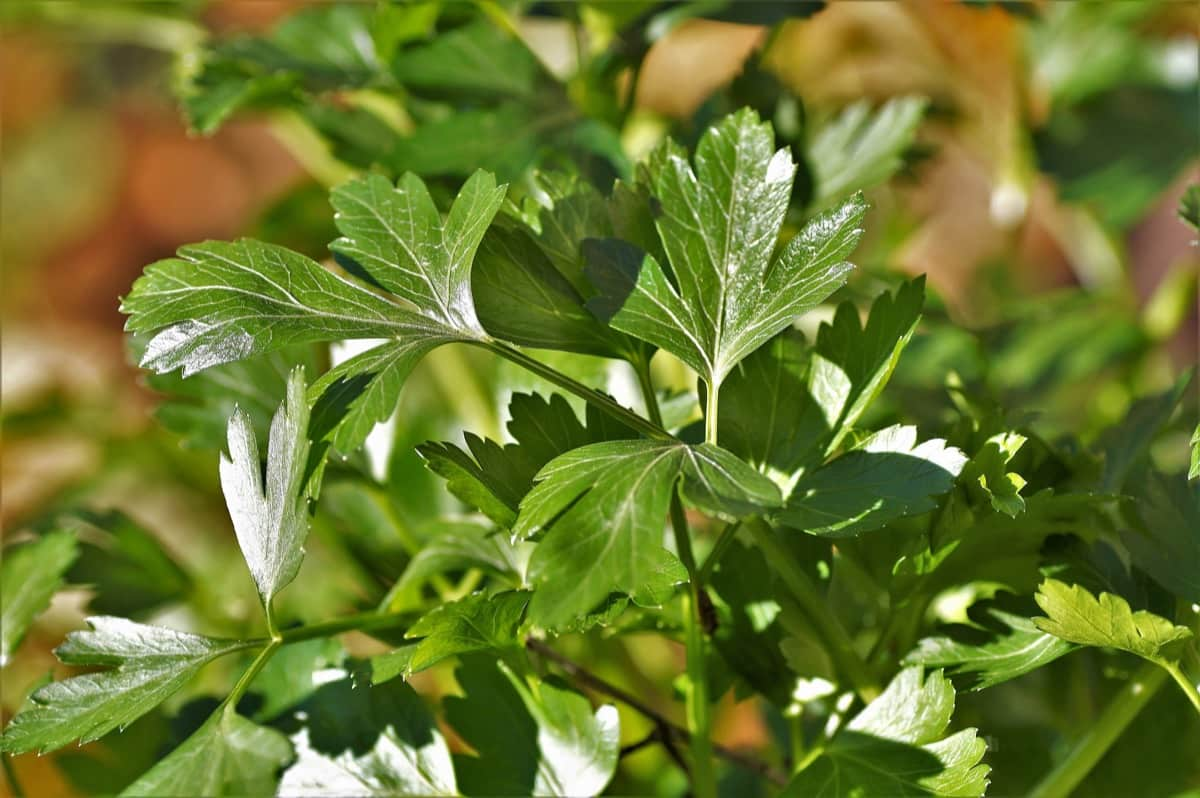
Marjoram
Marjoram is a fragrant herb that can add a nice touch to any hanging basket. This herb is easy to grow and maintain, making it a great choice for those new to gardening. Marjoram can be used in cooking or dried and used as a decoration. Marjoram is a great herb for hanging baskets because it has a light, delicate flavor that goes well with many dishes.
It’s also a hardy plant that can withstand some neglect, so it’s perfect for busy gardeners who don’t have much time to devote to their plants. Marjoram is a versatile and flavorful herb used in various dishes. Marjoram is also a great choice for hanging baskets since it is drought-tolerant and does not require much maintenance.
Creeping Rosemary
Creeping Rosemary is a fast-growing, evergreen herb that makes a wonderful addition to hanging baskets. The small flowers are very pretty and attract bees and butterflies. Creeping Rosemary is an evergreen herb with a strong, pleasing fragrance. The leaves are used in cooking, and the plant can also be used as a ground cover or ornamental plant.
Creeping Rosemary is a beautiful, fragrant herb that makes an excellent addition to any hanging basket. This hardy plant can tolerate full sun or partial shade and is drought-resistant, making it an ideal choice for those who want low-maintenance plants. Creeping Rosemary also has a long blooming period so that you can enjoy its flowers from spring through fall.
Salad Burnet
Salad Burnet is a perennial herb with small, round, dark green leaves. Salad Burnet is a low-maintenance plant that does well in full sun or partial shade. It is drought-tolerant and can even tolerate brief periods of flooding. The plant grows to about 18 inches tall and spreads 12 to 24 inches wide. The leaves of the Salad Burnet plant are very delicate, so they should be harvested before you use them. To harvest the leaves, snip them off with a sharp knife or scissors.
In case you missed it: 13 Herbs that Grow Best from Cuttings: A Must Grow Herbs List in Your Garden
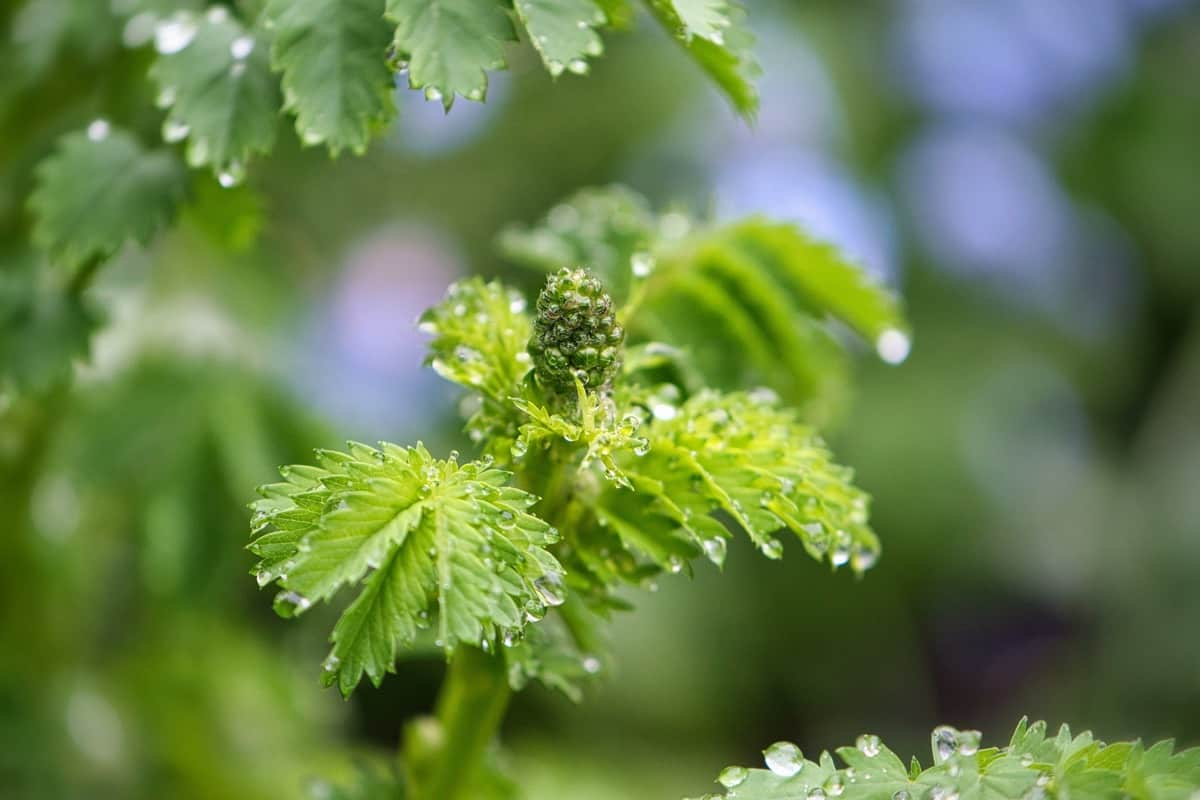
Rocket
If you’re looking for a fast-growing, colorful plant to add to your hanging basket, look no further than the Rocket plant. This herb is easy to care for and will add beauty to any space. Rocket plants grow best in full sun and well-drained soil. With proper care, your Rocket plant will thrive and provide you with beautiful blooms all season long. Rockets are annual plants that produce vibrant flowers in various colors, including yellow, pink, and purple. They bloom from late spring to early summer and make an excellent addition to any mixed floral display.
Rocket plants are easy to care for despite their name and are not fussy about soil type or pH levels. They require full sun but will tolerate partial shade, and they should be watered regularly but allowed to dry out between waterings. Fertilize with a balanced fertilizer during the growing season. To encourage bushier growth, pinch back the tips of young plants. Deadhead faded flowers regularly to encourage continued blooming. Cut the plants by half at the end of the season and allow them to regrow for another round of blooming next year.
Oregano
This herb is easy to care for and can add flavor to many dishes. Oregano prefers full sun and well-drained soil. Water your Oregano regularly, but allow the soil to dry out between waterings. When harvesting Oregano, cut the plant by one-third to encourage new growth. Oregano is a perennial plant, which means it will come back year after year. Be sure to water your Oregano regularly, as it will not tolerate drought conditions. You can harvest the leaves anytime during the growing season. Just snip them off at the stem and use them fresh or dried in your recipes.
In case you missed it: Growing Organic Oregano In Containers, Pots
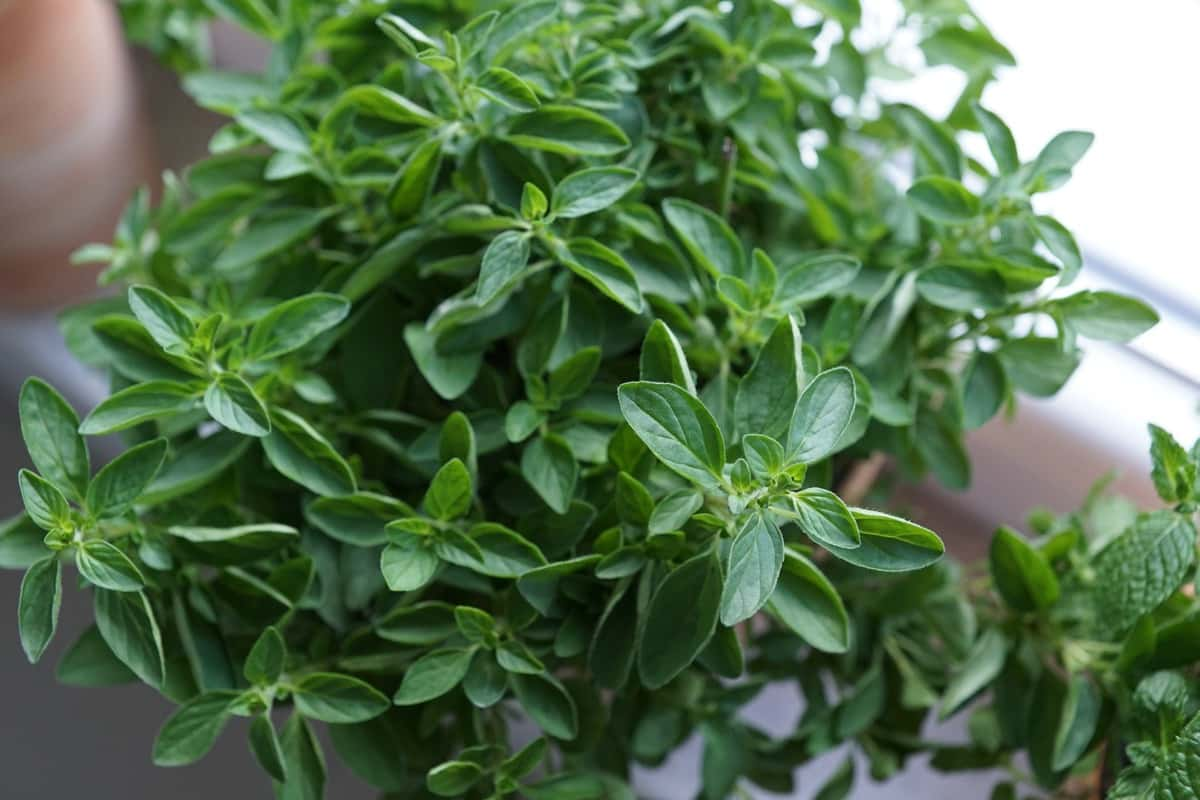
Lavender
One of the best herbs for hanging baskets is Lavender. This hardy perennial herb is perfect for dry, sunny locations and produces beautiful blooms that attract bees and butterflies. Lavender is also a great choice for those who want an easy-care plant that doesn’t require a lot of water. Lavender is a fragrant, evergreen herb that is perfect for hanging baskets. The Lavender plant has long, slender leaves and beautiful purple flowers. When watering your Lavender plant, water deeply but not too often. Over-watering can cause the roots to rot.
If you have high humidity, you may need to take special care of your Lavender plant to prevent it from getting moldy or mildew. To do this, ensure good air circulation around the plant by placing it in a well-ventilated area or using a fan. You should also avoid getting the leaves wet when watering the plant. Lavender is an easy-to-care-for plant that makes a beautiful addition to any hanging basket. With its fragrant flowers and pretty purple blooms, Lavender will surely add charm and beauty to your home decor.
Basil
Basil is best grown in full sun. Keep the soil moist when growing Basil in a hanging basket, and fertilize regularly. If the leaves start to turn yellow, it indicates that the plant is stressed and not getting enough water. Basil is an annual herb that grows quickly and easily. It can be grown in a hanging basket or mixed with other herbs. Basil needs full sun but will tolerate some shade. It needs well-drained soil and regular watering. Deadhead Basil to keep it blooming all season long. Basil is a useful herb that can be used in many different dishes.
In case you missed it: How to Grow Basil from Seed to Harvest: Check How this Guide Helps Beginners
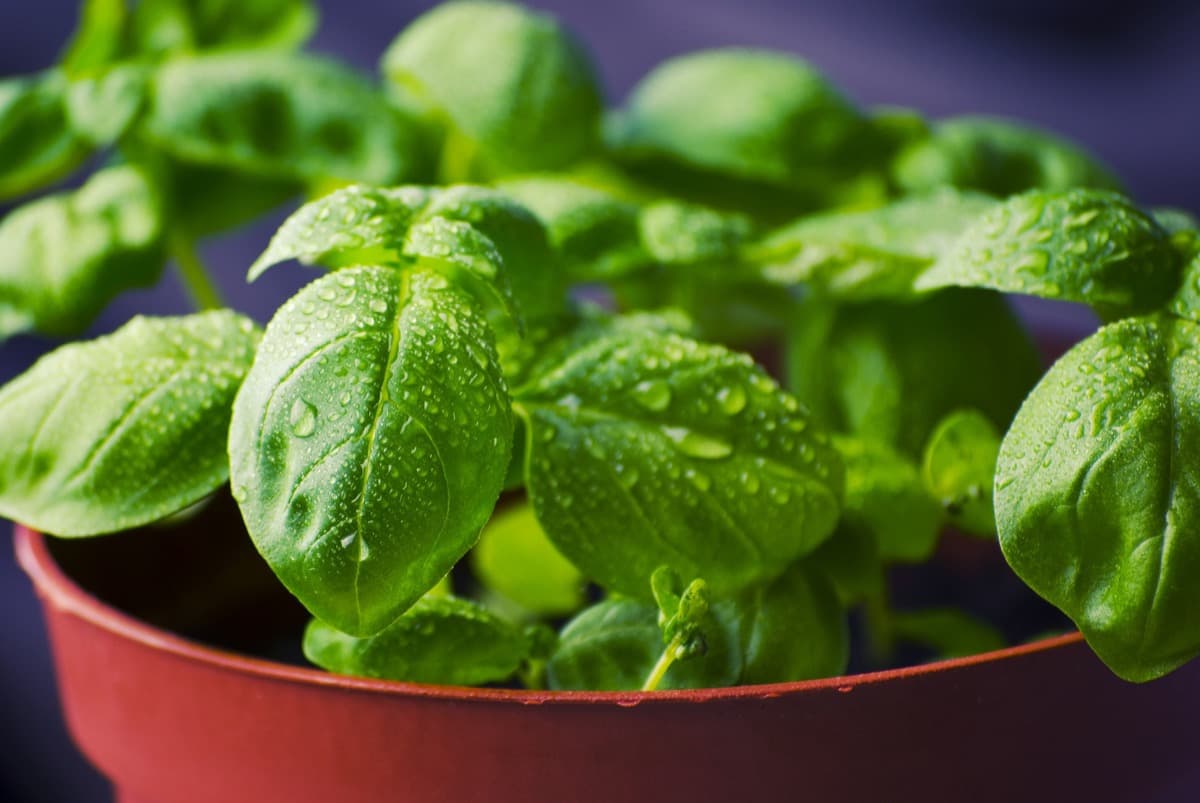
Choose the right size basket for your herbs
When choosing the right size basket for your herbs, remember a few things. First, consider the size of the space where you will hang the basket. You want to ensure that the basket is not large or too small for the area. Second, consider how many plants you want to put in the basket. A smaller basket will suffice if you only plan to put a few herbs in the basket. However, if you want to fill the basket with a variety of herbs, then you will need a larger basket. Finally, consider the weight of the plants when choosing a basket. Herbs can range in weight from very light to heavy, so be sure to pick a basket that can accommodate the weight of your plants.
Conclusion
Hanging baskets are a great way to bring life and color to any outdoor area. They can be dressed up with various plants and flowers, but adding herbs is one of the best ways to make your hanging basket stand out. Herbs bring a unique flavor and aroma not often seen in regular flower beds or baskets, making them ideal for sprucing up your outdoor space.
Adding herbs to your hanging baskets is an excellent way to bring some life and color into your garden. Herbs are low-maintenance plants that come in many shapes, sizes, colors, and scents, making them the perfect addition to any outdoor space.
- How to Grow Hibiscus from Flower
- Plantation Ideas for Home Decoration: A Beginners Guide
- Flower Garden Designs and Layouts for Beginners
- Planting and Spacing Techniques in Papaya: A Beginner’s Guide
- Growing Gold: Essential Techniques for Planting Pineapples
- How to Make Kalanchoe Plant Bushy: Home Remedies and Solutions
- 11 Reasons Why Your Gardenia is Not Blooming: Home Remedies and Solutions
- Eco Elegance: The Guide to Designing a Drought-Tolerant Landscape
- Gardening on a Slope: Strategies for Hillside Landscaping
- Nourish and Flourish: Top Organic Mulches for Thriving House Plants
- Everything You Want to Know about Indian Mogra Flower: Discover Uses and Growing
- Green Thumb Success: Expert Tips for Cultivating Greenhouse Pumpkins All Year Round
- Maximize Growth & Flavor: The Ultimate Guide to Companion Planting in Herb Gardens
- How to Control Rhododendron Problems Naturally: Home Remedies and Organic Ways to Fix Them
- Natural Magic: The Remarkable Benefits of Cinnamon for Plants
- Best Steps to Revive Dying Tulip with Natural and Organic Treatment
- 10 Reasons Why Your Angel Trumpet is Not Blooming: Remedies and Treatment
- How to Fix Periwinkle Leaf and Flower-Related Problems: Natural Remedies and Solutions
- How to Fix Zinnias Leaf and Flower Problems: Discover Natural and Home Remedies
- Organic Steps to Induce Lemon Tree Flowers: A Comprehensive Guide
- Bloom Booster: Crafting the Perfect Homemade Bougainvillea Fertilizer
- Optimizing Growth: A Guide to Applying NPK Fertilizer for Potted Plants
- 10 Best Homemade Fertilizers for Rubber Plant: DIY Recipes and Application Method
- How to Boost Female Pumpkin Flowers: Effective Steps for More Flowers and High Yields
- Transform Your Indoor Garden: Top Benefits of Pink Salt for Houseplants
- 10 Best Homemade Fertilizers for Peacock Plants (Calathea): Easy DIY Guide
- Unlock Blooms: 9 Reasons Why Your Potted Chrysanthemum is Not Blooming
- 8 Reasons Why Your Potted Hibiscus is Not Blooming: Fix it with Simple Solutions
- Unlock Blooms: 9 Key Reasons Your Potted Frangipani Won’t Flower
- 10 Reasons Why Is My Ice Plant Not Blooming: Remedies and Treatment
- 10 Reasons Why My Potted Hydrangea Not Blooming: Treatment and Remedies
- 10 Reasons Why is My Wisteria Not Blooming: Remedies and Treatment
- 10 Reasons Why is My Goldfish Plant Not Blooming: Remedies and Treatment
- Maximize Your Space: Ultimate Guide to Balcony Gardening with Grow Bags
- 10 Reasons Why Your Iris is Not Blooming: Remedies and Treatment
- 10 Reasons Why Your Anthurium Plant is Not Blooming: Treatment and Remedies